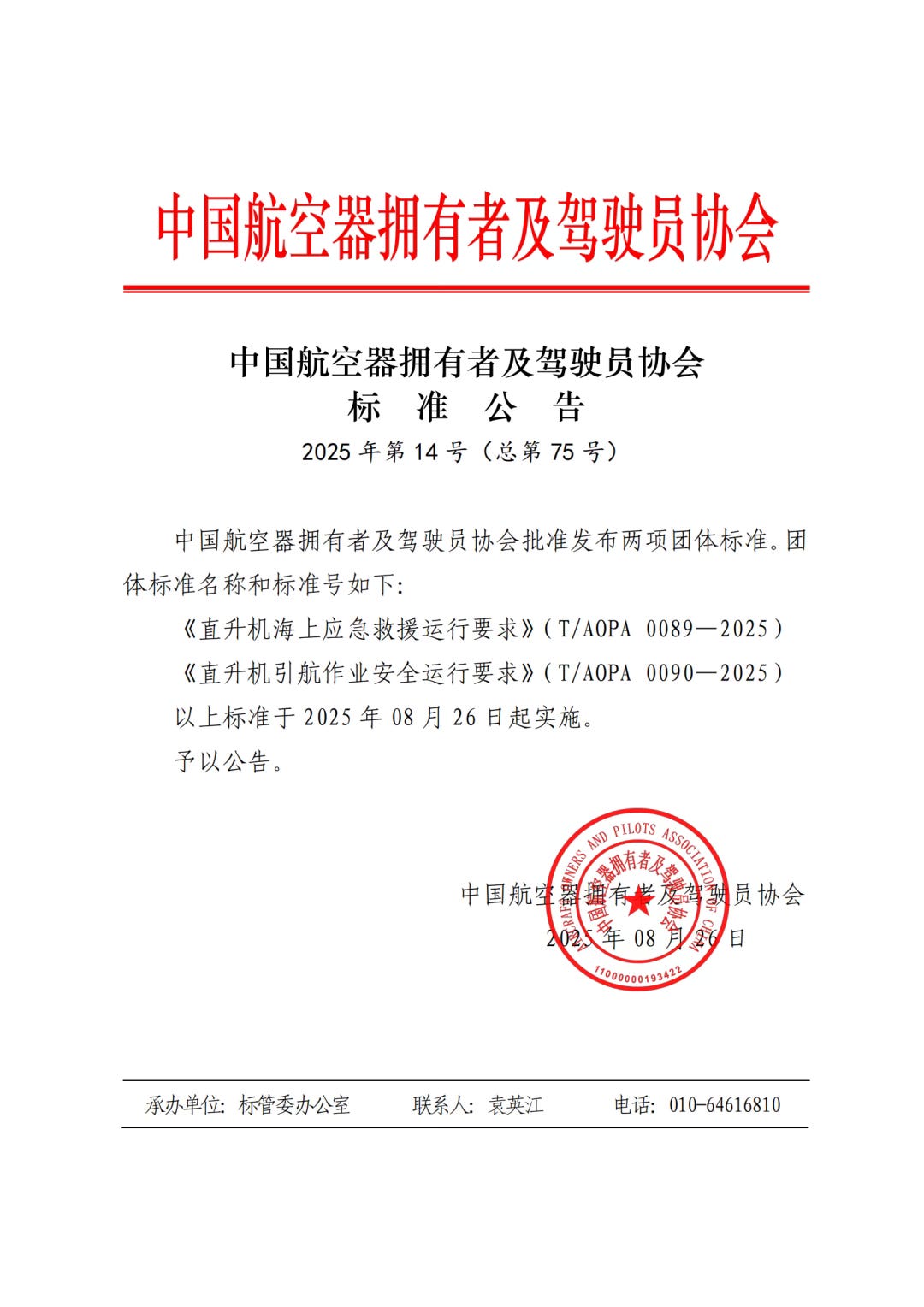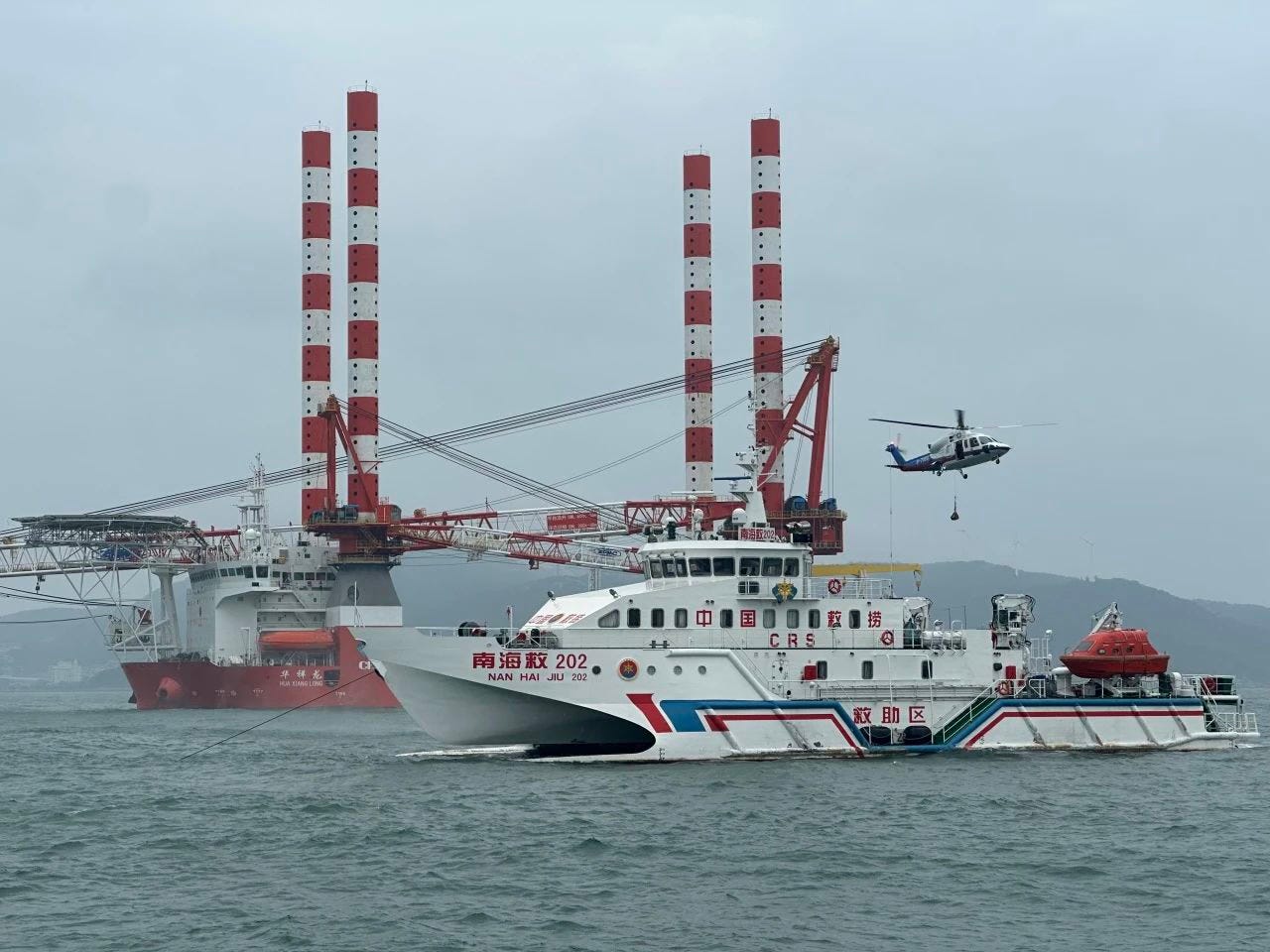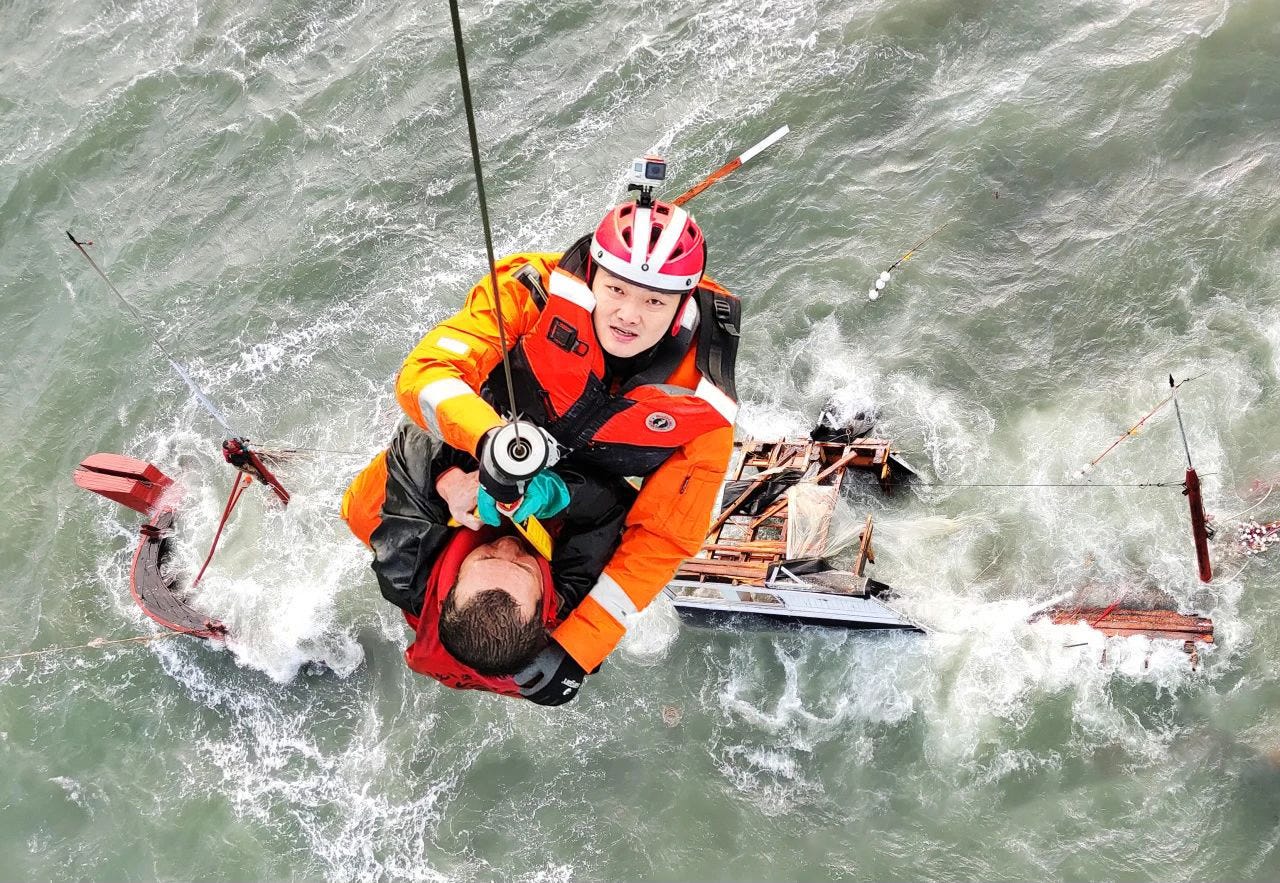AOPA China Releases Two New Helicopter Operational Standards
This report reviews the Helicopter Maritime Emergency Rescue Operational Requirements (TAOPA 0089—2025).
The Aircraft Owners and Pilots Association of China (AOPA China) has approved and released two new group standards, which come into effect today (August 26).
The standards were developed jointly by the Civil Aviation Management Institute of China, CITIC Offshore Helicopter Co., Ltd., and Wuhan Hangda Aviation Technology Development Co., Ltd.
The standards include—
Helicopter Maritime Emergency Rescue Operational Requirements (TAOPA 0089—2025)
Helicopter Pilotage Operations Safety Requirements (TAOPA 0090—2025)

The Helicopter Maritime Emergency Rescue Operational Requirements outlines crew qualifications, training, helicopter and equipment standards, and operational procedures. It is intended to standardize maritime rescue operations, improve efficiency and safety, and support the protection of human life and marine economic activities.
The Helicopter Pilotage Operations Safety Requirements specifies standards for operators, crew training, equipment, pilot management, operational rules, and vessel coordination. It is designed to reduce operational risks, ensure personnel safety, and support the sustainable development of maritime transportation and low-altitude aviation activities.
The release follows a technical review held on August 12, during which AOPA China invited professionals from multiple institutions, including the Civil Aviation Flight University of China, the China Academy of Civil Aviation Science and Technology, the China Helicopter Research and Development Institute, Nanhang General Aviation Co., Ltd., State Grid Electric Power Space Technology Co., Ltd., and the General Aviation Professional Operations Group of AOPA China’s Standardization Management Committee.
Below is a translated version of the Helicopter Maritime Emergency Rescue Operational Requirements, formatted slightly to improve readability.
The Helicopter Pilotage Operations Safety Requirements will be published in an upcoming post.
Let’s get into it.



